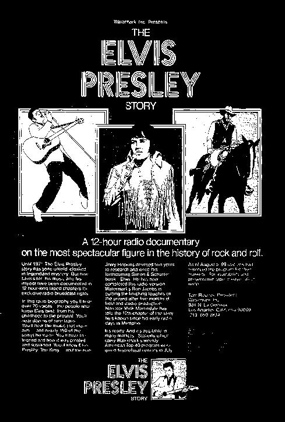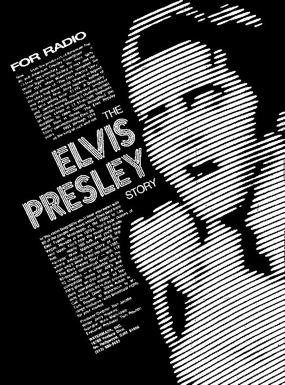
The 2010 Packers never trailed in XLV, building a 21-3 lead with thirty-nine seconds remaining in the first half before the Steelers scored their first touchdown. The game was somewhat in doubt until around the third minute of the fourth quarter when Packers quarterback Aaron Rogers threw his third TD pass of the game. It was a spectacular day for Rogers: he became only the fourth quarterback in SB history to throw for three TD’s, 300 yards and no interceptions. The Pack beat the odds, the opposition and went all the way. The Lombardi trophy went back to Green Bay, Wisconsin for the first time in fourteen years.
All in NFL World was groovy and gravy until March 11, 2011. Then the league’s “billionaire owners” and “millionaire players” could not agree on how to divvy up their reported nine billion dollars in annual revenues. How many US dollars is that? More than the Gross National Products of Algeria, Romania, Nigeria, Peru, Ukraine, Bangladesh, Kuwait, Morocco, Viet Nam, Puerto Rico, Kazakhstan, Slovakia, Croatia, Ecuador, Slovenia, Libya, Guatemala or Luxembourg. Regardless of the of economic shifting smorgasbords in these countries nothing on the scale of the NFL’s present impasse has occurred there. What has become the longest work stoppage in pro sports began 110 days ago and counting as I type this.
When asked if and when there will be NFL games this year my reply, based on what I’ve heard from league “insiders,” is that the first exhibition contest will take place on August 8, 2011, at the annual Hall of Fame game in Canton, Ohio. I was informed by those in-the-know that, “The St. Louis Rams and Chicago Bears will suit up, play, and get paid for that game on just one day’s practice if that’s the deal.”
By karmic coincidence or as an act of “The Football Gods” I’ve “followed” one of these teams since 1965: the Cleveland/Los Angeles/Anaheim/St. Louis Rams. Between the team's crumby last game and the lack of NFL news, there's been no story about the Rams in the St. Louis Post-Dispatch since June 20 and that is civil litigation news about a player best-known as "Mister Irrelevant."
Plummeting from appearances in two of the first three Super Bowls in this century, the former “Fastest Show on Turf” finished the 2009 season under a rookie head coach with a record of one win and fifteen losses. The only legitimately good thing about finishing last among the NFL’s thirty-two teams is that the franchise with the absolute worst record receives the overall number one draft choice for the coming year.

But even with Bradford’s spectacular play the Rams struggled, losing some close games by frustratingly close scores, games that could have easily gone either way. Of the Rams first five losses of 2010 the total margin of defeat was ten points. But heading into the sixteenth and final game of the season with a seven win, eight loss record, the Rams were still in the running to make the playoffs as champions of the worst division in pro football, the NFC West. The winner of final regular season game between the Rams and the Seahawks would move on to the first round of the playoffs and actually host the first game. The loser would go home, pack it all in, do exit interviews and watch the remainder of the season as spectators, if at all.
Dwelling on details of that dreadful debacle still sends me into pissed off paroxysms of pessimism. The Rams, particularly because of some inexplicable/insane decisions by their head coach, managed to score a total of six points in their final outing. The Rams tallied two field goals by kicker Josh Brown, who played his first five seasons for Seattle and tormented the Rams along the way before joining the club in 2008.
Mark Twain once said, “Facts are stubborn, but statistics are more pliable.” No matter how one spins the stats on the Rams last defeat in what should not have been the final game of their 2010 season there are no numbers flexible enough to deny the facts. One touchdown was scored that day in Seattle by the home team during the first five minutes of play. Seahawks kickers past and present made all the other points on field goals. The Rams were crushed in total yards gained: 184 to the winner’s 333. Bradford’s passing performance was his second worst of the season: 19 of 36 completed plus one interception.
But most disappointing and distressing to Rams fans, players and staff was the use (actually non-use) of running back Steven Jackson, one of the NFL’s elite ball carriers. The Rams coaching brain trust (or is it “no brains, no trust?”) allowed Jackson carry the ball eleven times in the entire game.
Put in context, this was the most critical matchup for the team in nine years since they played in and lost Super Bowl XXXVI to the New England Patriots by a score of 20-17 on a field goal as the final gun ended the game. The Rams dreams of a dominant dynasty vanished. Since that day, February 3, 2002, Rams partisans and many “experts” debated the Rams coaching “wisdom” that called for the incorrectly labeled “prevent defense” to stop Pats quarterback Tom Brady from marching his team down the field into three-point field goal range as the clock (and the season) ran out.
But this Monday morning speculation was wiped away when football fans consider the haphazard, seemingly random play calling by the Rams coaching staff headed by second-year head coach Steve “Little Caesar” Spagnuolo. Ironically his lone win in his rookie year put the team in position to draft Sam Bradford. Then in what turned out to be Bradford’s last appearance of the year he was never put in position to win this game. Rams lose, 16-6. “Spags” coaching record of eight wins against twenty-four losses leaves him with a winning (losing?) percentage of .250. That is the worst record of any Rams head coach since Hugo Bezdek won one game and lost thirteen, a career .071 percentage. That was in 1937, the first year of the franchise, eight decades prior to the meltdown on the day after New Year's 2011.

Spagnuolo returned to St. Louis. Five days later, about 120 hours after the fact, he fired the team’s equipment manager, Todd Hewitt. Huh? Todd began helping his dad and predecessor, Don Hewitt, back in 1967, XLIV years earlier. (Don’t these Roman numerals look like the call letters of Mexican radio stations?)
Reporter John H. Tucker of the Riverfront Times conducted the first in-depth interview with Hewitt on January 12. For the facts of the matter (and a great photo of Todd), you might want to check outhttp://blogs.riverfronttimes.com/dailyrft/2011/01/todd_hewitt_fired_from_rams.php.
Nearly 1400 words into this blog/rant brings me to the point of the above back story: Although Todd Hewitt was ignominiously released by the Rams at year’s end, he is one of a very few NFL team employees who has been working since he was literally tossed out of the Rams facility and into the snow.
In addition to Hewitt the team released a handful of other longtime, loyal employees who, like Todd, would soon qualify for full medical coverage until they become eligible for Social Security and other government benefits. Many of them are bringing legal action against the St. Louis Rams for a variety of alleged violations.
When it comes to the dismissal of Hewitt and the others to this day the Rams have assiduously issued versions of “No Comment” on the subject. Spagnuolo’s most pertinent quote on the matter is something like, “We are moving in another direction.”
I met Todd’s father in 1967 when he was hired away from the University of Southern California to accept the similar position, head equipment manager, of the then-Los Angeles Rams.
Put it this way: I can spend the rest of my days wearing clothing by “Van Hewitt of St. Louis,” which is what former Rams Pro Bowl defensive end Fred Dryer called all the Rams clothing when he joined the team in 1972.
That aside, the question is “What has Todd Hewitt been doing since his (and the league’s) season ended?” Answer: Writing his book NFL LOCKER ROOM CONFESSIONS © 2011.
I am along for the ride as co-author. It is my fourth book. If you think you “know about” professional football and its players, coaches and fans, then hang on. Most all of this book is about the off-field adventures of Sunday’s Heroes during the 164 hours or so during each week of the season when they are not playing on the gridiron but just playing. Big boys with expensive toys. Muy grande amigos with mammoth egos. Millionaires just out of their teenage years. Rolexes to Rolls-Royces to rock’n’roll and rolls in the hay (or wherever they could tackle a feminine fan).
Item: Here’s one fact you might find strange or contradictory to what you have thought about the game: Hardly any NFL players wear jock straps. Or “cups.” Just a glimpse of the naked truth coming your way.

© 2011 Todd Hewitt & Ron Jacobs




 So fascinating to me was
So fascinating to me was